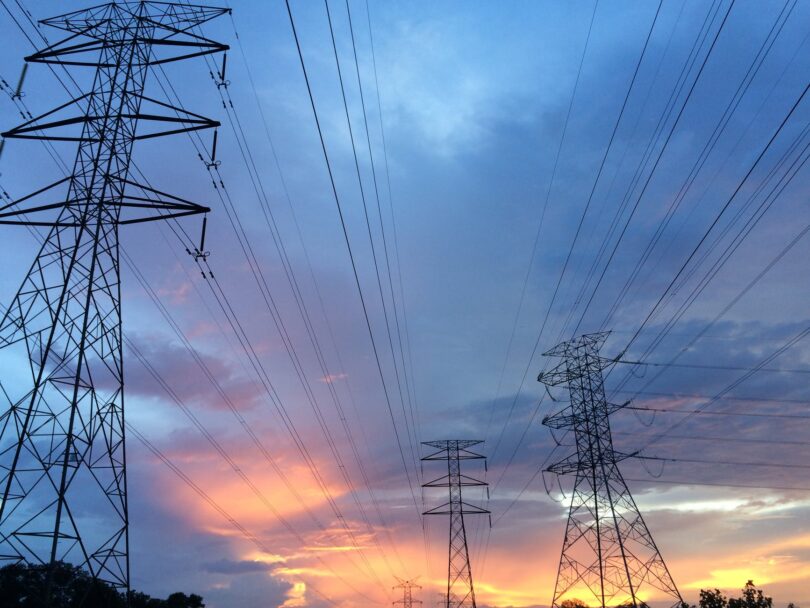CGX Energy (OTCPK:CGXEF, TSXV:OYL) is a publicly traded Canadian company and a pure play on Guyana’s oil and gas success and near term exponential economic growth. The South American country of Guyana experienced 43.3% Gross Domestic Product (GDP) growth in 2020, thanks to their emerging oil industry.
The NASDAQ stock market now expects their current GDP of $7 billion to more than double by 2025, reaching over $14 billion and beyond. Guyana is the fastest growing economy in the world. National revenues being generated will launch transformational regional growth and fund substantial infrastructure and economic development throughout Guyana including new schools, hospitals, roads and highways, bridges, ferry services, air services etc.
Guyana’s recently elected President Dr. Mohamed Irfaan Ali campaigned on an agenda of advancing direct foreign investment. In an address at the Latin America & Caribbean Conference on October 21, 2020 Ali made a compelling case for investors, pledging to lower or eliminate barriers to entry, create favorable tax terms, and champion an economic boom to make Guyana the most exciting investment opportunity in the world. Free and special economic zones are expected to be created as discussed in the Guyana Chronicle here.
Today there are eight active drilling rigs located in the Guyana-Suriname basin performing exploration drilling and development drilling activity. When the Maersk Discoverer semisubmersible rig arrives in the next two weeks under contract with CGX Energy (OTCPK:CGXEF, TSXV:OYL), there will be nine. Exxon (NYSE:XOM) has already deployed two floating production, storage and offloading units (FPSOs) to develop their existing discoveries within the Stabroek block and could have at least five FPSOs online by 2026. By that time, the International Energy Agency (IEA) estimates Guyana will be producing 600,000 bbl/day of oil, which would make it the fifth top producer among non-OPEC countries and ninth foremost globally. Guyana receives ~53% of the profit from Exxon’s Stabroek operations.
Recently reported in the Guyana Kaieteur News, the demand for local port services has grown almost exponentially in the past few years and Guyana has been losing billions of dollars as it lacks the necessary infrastructure to support their developments. More than 75% of the port business servicing offshore oil and gas operations in Guyana and Suriname are provided by Trinidadian ports. The head of neighboring country Suriname’s national oil company, Staatsolie, confirmed the need for a regional deep water port facility to service activities in both countries.
CGX Energy is a Guyana Pure Play
CGX Energy is a publicly traded Canadian company and a pure play on Guyana’s oil and gas success and economic boom. Since 1997, CGX Energy has been an active oil and gas explorer both onshore and offshore Guyana. Over the past 20 years, this resilient company has encountered many catastrophic setbacks that most peers would not have survived were it not for their relationships and potential. CGX Energy has managed to hold onto three coveted exploration block licenses 66.67% WI in Corentyne and Demerara offshore and 62% WI in Berbice onshore, which cover 2.7 million acres gross, 2.3 million acres net combined. Their only consortium partner for their offshore blocks is Frontera Energy (OTCPK:FECCF or TSXV:FEC) who holds the other 33.3% WI. After years of comprehensive 3D seismic work the partnership contracted McDaniel and Associates Consultants Ltd in 2020 to conduct an Independent External Prospective Resource Study on their Corentyne North Area, Corentyne Main Area and Demerara Block. This study was completed in accordance with industry standards highlighting 32 prospects (27 in Corentyne and 5 in Demerara) and an independent mean resource estimate of 4.9 billion boe. CGX Energy is now positioned to become an oil and gas Cinderella Story.
A news release regarding their independent external resource report and exploration potential can be viewed here.
The Guyana-Suriname basin is the world’s top exploration hotspot, often described as the Holy Grail of oil and gas. According to Westwood Global Energy Group, “licenses in emerging plays were valued, on average, 1.5 times higher than those in frontier plays and almost 3.5 times those of mature plays over the last five years.” Companies will pay a premium to access emerging plays which have significantly less risk than frontier exploration and where pool sizes are much larger than in mature plays. The largest farm-out exploration deal in the last 5 years was for the Guyana-Suriname basin in 2019 associated with Apache (NASDAQ:APA) prospect Maka Central, where Total (NYSE:TTE) accessed the prospect via a 50% WI and operatorship farm-in to Apache’s Block 58. The Maka-1 well was still being drilled but preliminary results had confirmed the prospectively of the Suriname license. To close the joint venture deal, Total paid Apache a $100MM signing bonus, reimbursed Apache its share of past costs for its first three exploration wells and could pay more depending on further developments. Apache said it would also receive $5 billion of cash carry on it’s first $7.5 billion of appraisal and development capital along with other considerations. Total will eventually become the operator of that block. Total stated in their December 2019 press release that “Cost of carry and payments would then represent an acquisition cost of around $2 per barrel.”
CGX Energy’s Corentyne Block is comparable exploration acreage to adjacent Block 58 and has an independent mean resource estimate of 4.4 billion boe Unrisked and 785 MMboe Risked. One might venture that a farminee might immediately pay $1047 billion or $2/bbl x 785 MMBoe x 66.7% WI just to purchase their full WI in that specific license. If you couple the Demarara block in the farmout deal, the value would be $1,179 billion prior to announcing a single discovery.
The basin’s discovery potential remains significant with multiple prospects yet to be found. Exxon estimates it can contain more than 18 billion boe resources. 45 wells were drilled over almost a 50 year span resulting in no commercial discoveries until Exxon hit the Liza discovery in late 2015. Since then, more than 9 billion boe resources spanning 18 prospects have been discovered in the Stabroek Block and three other discoveries in the Orinduik and Kanuku Blocks by other companies offshore Guyana. So far, Apache has made four discoveries at Block 58 while Petronas has made one at Block 52 offshore Suriname. Rystad Energy’s upstream team suggested in March 2023 that “close to 300 MMboe has been discovered on average for each exploration well (wildcat and appraisal)” drilled in Guyana in the last 6 years. The lucrative exploration success rate in this emerging basin now stands at ~70% since 2015, compare that to worldwide metrics of 7% success for frontier exploration and 11% success in mature basins according to Wood Mackenzie in 2020. That quality of exploration potential should deliver profound market upside for a company the size of CGX Energy trading at US$1.36 per share OTC and having only US$391 million market cap at time of my writing.
CGX Energy is now mobilizing the Maersk Discoverer rig to test their Kawa prospect in the Northern Area of the Corentyne Block. This acreage is flanked by international heavyweights on three sides including operators Exxon (NYSE:XOM), Chevron (NYSE:CVX), Apache (NASDAQ:APA), Qatar Petroleum and Repsol (OTCQX:REPYF) which are obvious farminee candidates. The Kawa-1 well is expected to be drilled to a depth of approximately 6,500m in water depth of approximately 370m and should spud within weeks in August 2023 then be completed in 75-85 days. The primary target is a Santonian age, stratigraphic trap, interpreted to be analogous to the four significant, adjacent, and on-trend Apache discoveries immediately to the east on Block 58 in Suriname; Maka Central, Kwaskwasi, Sapakara West and Keskesi East. Exxon’s Haimara and Pluma discoveries in the Stabroek Block are also in close proximity but are not considered the best offset analogues as they were shallower wells which landed in younger Campanian formations, obviously the stacked pay potential from those formations may yet exist.
CGX Energy’s July 2023 operational update regarding Kawa-1 can be viewed here.
Infrastructure
In addition to the exciting exploration potential, CGX Energy, through its wholly-owned subsidiary Grand Canal Industrial Estates Inc (GCIE), is a unique emerging infrastructure development. The company is fast tracking construction of the strategic, high profile Berbice Deep Water Port (BDWP) on 30 acres of land on the eastern bank of the Berbice River to meet the dire need and explosive growth in the region. The construction of it’s wharf platform is scheduled to commence in September 2023. The facility is designed to have a 220m length wharf platform that is 30m wide, accessed by a 50m trestle. An approved dredging program is intended to ensure continual unencumbered access to supply and cargo vessels. Depth is targeted to be maintained at a 7m low-tide draft within the berth area and access channel that leads to the BDWP pier. GCIE also owns and operates a 16 acre laydown yard in Berbice at Bramfield. This facility is fully permitted and operational as a logistics base and will service the BDWP only 3.2km away. The capital cost for the project to 2023 is now estimated at US$70 Million. GCIE’s projected investment is in the range of US$130 Million with further expansion to construct heavy lift and fabrication facilities being assessed.
In a news release on July 12, 2023, CGX Energy shared the following forward looking statements:
“Work is on schedule for the operationalization of the offshore oil and gas support shore base by mid-2023 and for the operationalization of containerized cargo, agricultural cargo and specialized cargo terminal by the end of 2023.
The BDWP intends to service growing offshore demand in the oil and gas sector and significantly shorten supply routes, simplify logistics, and reduce cost and operational risk. Travel time from the BDWP to offshore fields is approximately 12 hours compared to approximately 2.5 days to regional ports currently used by operators. The BDWP port will enable provisioning of operators and vendors in territorial waters of both Guyana and Suriname.
The Company commissioned an independent market assessment study for the BDWP, conducted by Maritime & Transport Business Solutions (“MTBS”) of Rotterdam, The Netherlands. According to the MTBS marketing report, the BDWP is expected to service the demands of 1 offshore well in 2023 following start-up; growing to 7-12 offshore wells / year beginning in 2023. The BDWP is positioned to play a leading role in the expansion of the oil and gas sector in Guyana and Suriname. The MTBS report predicts revenue generation from 2023 related to offshore oil and gas services reaching approximately US $37 million by 2025 and steadily increasing thereafter. The life-cycle of a producing field requires support, consumable supplies, equipment and services.
The BDWP’s containerized, specialized and agricultural cargo operations are targeted to be fully operational by the end of 2023. The MTBS marketing report predicts that by 2030, the port will handle over 835,000 tons of cargo, with 64% of this related to the export of rice. Approximately 30 – 50% of the rice grown in Guyana is produced in regions 5 and 6 and the BDWP will provide important support to this industry and service its expected growth. The BDWP report predicts revenue generation from the cargo handling operations of the port to reach approximately US $28 million by 2025 with steady growth predicted, reaching approximately US $37 million by 2030.
The Company also commissioned MTBS to prepare a financial model for the BDWP, with inputs from GCIE as well as other advisors and consultants such as Aqua & Terra Consultores Asociados S.A.S and SRKN’gineering and Associates Ltd. The financial model predicts that the payback year for the project is 2025 with an above industry average net present value and internal rate of return values.
This is a transformative project for the enablement of local content in the oil and gas industry and for the transformation of the country’s agricultural and commercial sectors.”
A detailed overview of the Berbice Deep Water Port Project can be viewed here.
From an ESG perspective, without this port there are cost, fuel and carbon footprint concerns for companies operating in Guyana and Suriname supported by Trinidad based ports. Due to the sailing distance, they use at least 5 times more fuel, leading to increased carbon emissions and escalation of costs related to fuel consumption, equipment rental, wear and tear and complicated logistics.
BDWP is a profound opportunity not only for CGX Energy, but also for Guyanese people seeking to capitalize on the emerging jobs in the oil and gas industry. The BDWP is expected to create some 1,000 direct jobs during the construction phase with 300 persons employed when the Port is fully operational. A link to the Kaieteur News article can be found here.
Funding and Risk Factors
CGX Energy may have difficulties raising equity as they are in a capital-intensive exploration and development phase pre revenue, particularly without excessively diluting shareholders. In April 2023, CGX Energy leveraged their relationship with Frontera Energy to secure a US$19 Million Loan Agreement to finance their budgeted costs for 2023. Frontera Energy has been highly supportive of CGX Energy but their cash infusions are limited in size and durability. A more substantial JV partner could rapidly scale and monetize CGX Energy’s strategic advantages. That would be a huge win for the region as well as for the consortium shareholders.
Ports are excellent investments, particularly ports in economic zones while they are ramping up. Profitability for such a strategic asset could be in the range of 60-70%. EBITDA multiples for a fair market valuation often range between 10 to 30 times. In 2007 Warburg Pincus LLC partnered with the Gangavaram Port in India during the early stages of port development. The new port began commercial operations in 2009. In March 2023 Warburg Pincus sold their 31.5% stake in the Indian port to the Adani Group for approximately US$268 million, an implied EBITDA multiple of 9x and P/E multiple of 12x. You can assess the transaction announcement here. Just a few days later, Bloomberg reported that Warburg had reinvested US$110 million for a 0.49% stake in Adani Ports and Special Economic Zones Ltd. (XNSE: ADANIPORTS). Adani Ports is currently trading with an EBITDA multiple of 21x and aims to double EBITDA by 2025. CGX Energy’s BDWP is projected to be paid back and generating US$65 million in 2025, it may then be worth US$887 million assuming 65% profitability and 21x EBITDA.
In a 2007 International Tribunal on the Law of the Seas maritime boundary dispute with Suriname, CGX Energy financed a significant portion of Guyana’s legal expenses at a cost of nearly $10 million. Often considered Guyana’s indigenous oil and gas operator, there is strong working relationship between CGX Energy and the government. In 2019, the Natural Resource Fund Act (NRF) was passed which created Guyana’s sovereign wealth fund. The NRF is currently held at the Federal Reserve Bank of New York and, as of February 2023, has a balance of $246.5MM. If necessary, given the importance of the BDWP to Guyana’s growth trajectory, President Ali may leverage the NRF to help CGX Energy secure infrastructure lending. Sovereign wealth funds support their nation’s long-term economic vitality and often direct investments overseas. They focus on two objectives: acquisition of assets and real estate, and the purchase of shares in high quality financial and industrial firms. Investing in the BDWP project is an ideal fit. Guyana’s largest trade partners are the United States, Trinidad and Tobago, Canada, and Venezuela. Trade is radically increasing with the United Arab Emirates, Austria, Japan, Ukraine and India. Sovereign wealth funds from any country wishing to strengthen their relationship with Guyana should consider investing in key infrastructure there. Ports support the efficient movement of commerce which strengthens, modernizes, and reduces costs for all involved.
As with any exploratory player, CGX Energy is exposed to weather related and geologic risk with respect to its construction and offshore operations. In addition, lesser risks commonly associated with emerging markets, including political and social instability cannot be entirely ignored.
Summary
- Guyana is the fastest growing economy in the world and their GDP is expected to double by 2025.
- CGX Energy (OTCPK:CGXEF, TSXV:OYL) is a publicly traded Canadian company and a pure play on Guyana’s oil and gas success and near term exponential economic growth.
- CGX Energy holds three coveted exploration block licenses (Corentyne and Demerara offshore and Berbice onshore) which cover 2.7 million acres gross, 2.3 million acres net combined.
- CGX Energy has captured a unique, much needed, infrastructure opportunity by fast-tracking strategic regional port services with their Berbice Deep Water Port set to be operational next year.
- CGX Energy needs to raise capital to fund their exploration campaign, port development and expansion. It’s the ideal partnership and investment opportunity during an economic boom which can be captured multiple ways.
This article was written by u/shedrills77.




